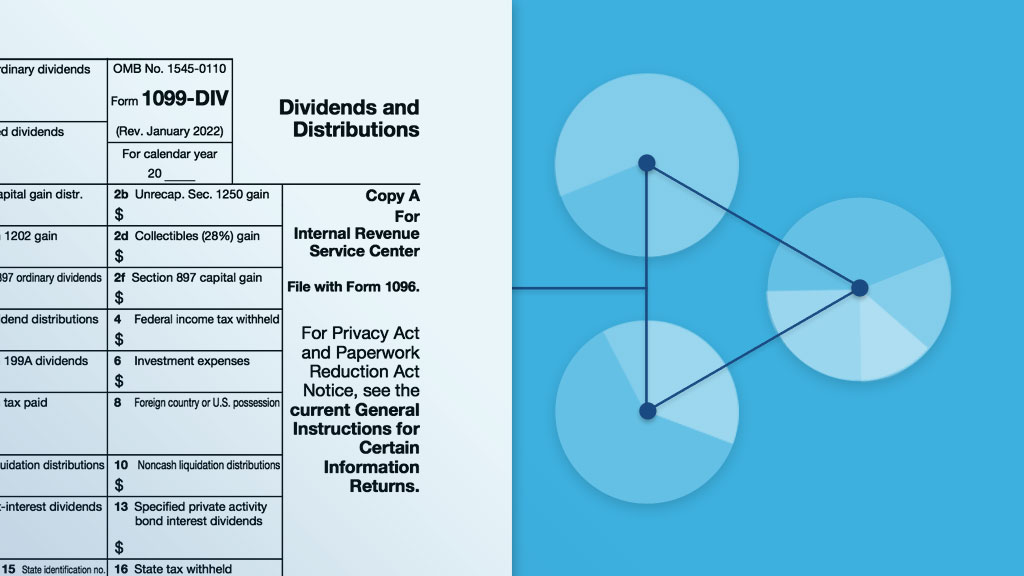What Coordinating Investment Accounts Means for Client Tax Returns

Arthur Godfrey, a famous American radio and television entertainer in the 1950s and 1960s, once said: “I’m proud to pay taxes in the United States. The only thing is, I could be just as proud for half the money.”
You probably have clients who feel the same way. If you’re advising them on how to maximize the tax efficiency of their portfolios, then you could be helping them save on taxes – if not by half, significantly enough to make their retirement more comfortable.
Tax planning for tax efficiency is not a topic that many clients understand or realize they need to raise. That’s where you need to play the roles of both educator and financial advisor.
By the grace of Congress and the labyrinthine U.S. tax code, there are many opportunities for that investors to save and invest for their retirement that can, ultimately, help them secure more income and lower taxes.
Failing to manage portfolios with an unblinking eye on tax efficiency could ultimately cost your clients thousands of dollars in income. An independent analysis by EY of LifeYield’s algorithms for managing tax efficiency found those could boost client income by as much as one-third! Will clients move to an advisor who can help them realize those tax savings?
Let’s look at some of the varying tax treatments of different types of investment accounts and the tax treatments of the kinds of investments. From there, we’ll talk about asset location and how paying heed to the location of investments can pay off in lower taxes (and so, more income).
Finally, we’ll touch on other tax considerations with investing and the questions you’re likely to field from clients about the tax treatment of their investments.
The Three “Tax Types” of Investment Accounts
It seems like everybody is an investor these days. People with curiosity and time on their hands often gravitate to business news and stock tickers. From there, it’s only a short ride to an online broker (or a human one).
And, of course, employers use benefits like stock options, employee stock ownership plans, and tax-advantaged retirement accounts to attract new employees and reward those excelling in their performance.
Here are the types of accounts your clients likely have (and often in multiples):
Taxable Accounts
Taxable accounts expose clients to tax liability through dividends or interest earned on investments held in the accounts as well as capital gains are realized by the sales of assets that have gone up in value. Examples of taxable accounts include stocks, bonds, some mutual funds, and exchange-traded funds.
Tax-Deferred Accounts
Tax-deferred accounts are a type of “tax-qualified” or “tax-advantaged” accounts. They allow investors to delay paying taxes until they withdraw money and pay ordinary income tax. Examples of tax-deferred accounts include 401(k)s and individual retirement accounts (IRAs).
Tax-Exempt Accounts
Tax-exempt accounts are the third type of tax-qualified account. Investors in tax-exempt accounts must pay income taxes upfront before investing. These accounts allow the investor to avoid further taxation if the investor follows the rules governing the accounts. Examples of tax-exempt accounts include Roth IRAs.
Health savings accounts (HSAs) are a hybrid type of account. HSAs are fully tax-exempt. Investors don’t pay taxes on:
- The money they deposit (up to the limit that the Internal Revenue Service announces annually)
- Interest on savings or money earned through investments
- The money they withdraw if they use the funds for qualified medical expenses.
It’s easy to see how clients can amass a portfolio of many types of accounts. For example, a person:
- May have had three or four jobs where they invested in 401(k) plans.
- Received stock through bonus or employee stock purchase plans.
- Used savings to open a brokerage account.
- Own a couple of HSAs opened by employers who offered qualified high-deductible health plans.
- Had periods of self-employment when they funded IRAs or Roth IRAs.
In today’s world, that picture is no exaggeration. People know that if they don’t take matters into their own hands, they will suffer financially in retirement. So, when opportunities present to save money for retirement, they do.
Asset Location and Tax Efficiency
With the investor described above, you can probably tell that there were lots of opportunities to pick and choose from various types of investments available within the accounts (or favored by a broker). It’s possible – well, probable – that they made some choices without considering the tax treatment of the investments in the accounts.
The result? The investor may have loaded up taxable accounts with investments that provide much income through dividends, interest, and capital gains. The wiser choice might have been to invest in the same types of assets in tax-deferred or tax-exempt accounts and benefit from the superior tax efficiency of those accounts.
In another scenario, an investor may have been conservative in choosing investments in a tax-advantaged account and invested in tax-exempt municipal bonds. Because those are tax-exempt, they already have a “tax advantage.” Holding them in a brokerage account is just fine.
Such analysis used to take lots of time, tax code know-how, and tab upon tab in Excel. We’ve come a long way. Now there’s technology – like the kind developed by LifeYield – that can evaluate an investor’s total portfolio of accounts and identify those that are misaligned to the tax treatment of the accounts.
This process is called asset location. And it’s something advisors need to be doing for their clients. Right. Now. The long-term benefits of asset location can reap thousands, hundreds of thousands, of additional income through tax savings over an investor’s life.
LifeYield technology approaches this by evaluating an investor’s accounts – all of them, even those that aren’t parked with an advisor’s firm — for tax efficiency. The technology measures how tax-efficient the portfolios are and, to help illustrate, assigns an asset location score on a scale of 0-100 – something everyone can relate to, right?
In the following, crucial step, LifeYield technology can demonstrate how changes in the account locations of some assets in an investor’s portfolio can improve the tax efficiency score. It’s not telling the investor to buy or trade; it’s just pointing to the proper location for the assets the investor already has.
Example
Your new client comes in (or you meet by video call), hoping that you can help them prepare for retirement with the portfolio they already started. Luckily, your firm just implemented an asset location tool using the LifeYield API library.
You use the tool to evaluate the tax efficiency of the new client’s portfolio of accounts and assign an asset location score. On a scale of 0 to 100, their portfolio returns a score of 40. There’s room for improvement.
You run the portfolio through your firm’s technology again to optimize the account location of existing assets. The score goes up to 65 – a 25-point improvement. LifeYield will even tell you exactly how to accomplish this. Even better, you can show the client that a 25-point difference could mean up to another $300,000 in income after taxes for your client when their accounts mature, and they retire.
Proof you can show your client in black and white.
Toward a Deeper Understanding of Asset Location and Investment
You know from working with investors, the steps in making investment choices include which accounts to use for which investment – taxable accounts or tax-advantaged accounts? And of the tax-advantaged accounts, which ones?
There are investments that are high in tax efficiency, and some are low(er). Generally, investors can maximize tax efficiency by holding investments that are tax-advantaged in taxable accounts and investments with lower tax advantages in tax-exempt or tax-deferred accounts.
Examples of Investments with Tax Advantages
- Individual stocks: As a rule, these are reasonably tax-advantaged when bought and held for at least one year.
- Equity index mutual funds: ETFs included, also a reasonably tax-advantaged investment.
- Tax-managed equity funds: These equity funds explicitly name tax advantage as a goal.
Examples of Lower Tax-Advantaged Investments
- Bonds and bond funds: Highly tax-disadvantaged due to the interest payments generated and their taxation at a higher ordinary income tax rate, which does not include tax-free municipal bonds, funds, and U.S. Savings Bonds
- Actively managed stock funds: These funds have investments with higher turnover rates and may generate taxable capital gains. Investors must pay short-term capital gains tax at higher ordinary income tax rates when investments are held for less than a year.
Asset location technology accounts for these subtle-but-important differences. Again, technology can be your guide (and your savior). LifeYield APIs integrated into your firm’s tech stack can scan, measure, and recommend the tax-efficient improvements your clients’ portfolio needs in just seconds, helping you discern where assets need to be distributed.
One point to clarify: Asset location is not asset allocation, although the two are (understandably) often confused. Asset allocation is the investment process that advisors use to balance risk and reward in a portfolio based on an investor’s risk tolerance, goals, and investment period, or timeline. Asset allocation informs what investments an advisor recommends so that investors’ money is working toward their goals while still letting them sleep at night.
It is also important to note that asset location isn’t about sheltering your client’s assets and accounts from taxes. It is a strategy designed to see that investors pay taxes on the income their investments produce — but not more than they are legally obligated to pay. In other words, it takes advantage of the tax-saving opportunities the U.S. Internal Revenue Code provides to maintain a portfolio that meets the investors’ parameters for cost and risk tolerance.
Evaluating Whether Your Client Will Benefit from Asset Location
Not to ruin the punchline, but a client seldom doesn’t benefit from an asset location strategy. The more of these categories your client fits into, the more likely they are to have a better after-tax return for their portfolio when they retire.
| Your client is paying high marginal income tax rates. The higher the marginal income tax rate your client pays, the bigger the potential benefits of an asset location strategy. It can help produce more income for the client, even the one subject to higher tax rates. |
Your client is expected to pay a lower marginal tax income in the future. If you expect that your client’s marginal tax rate to decrease in the future, such as in retirement, an asset location strategy can make it possible to defer income to the future – income that will be taxed at a lower – and reduce taxes now. |
| Your client has significant assets in tax-inefficient investments that are held in taxable accounts. When clients have tax-inefficient investments like bonds or bond funds, there is a greater potential to increase the after-tax return using asset location. Executing a plan based on asset location technology can make that happen. |
Your client expects the investment to last more than ten years. Asset location strategy is not an instant reward system. It can take ten or more years for clients to see the return from their investment that they hope for. The longer assets are invested, the greater the potential for realizing tax savings from asset location. |
Investments and Income Tax Planning
Of course, clients are investing to fund their family needs – homes, college educations are a couple of examples – as well as their retirement. Whatever age (or stage) they’re at, investors all face the tax man every April 15. Or more often.
Luckily, there are many ways that investors can improve their investment returns and minimize the taxes they must pay. It just takes smart tax planning and execution to work it all out. Fortunately, technology is at the rescue here, too.
Tax Loss Harvesting
Tax-loss harvesting is the practice of selling off investments to realize a loss. In most cases, this is done to offset realized capital gains within the same tax year. It’s a common strategy for reducing an investor’s income tax bill.
There is one thing to watch out for when using a tax harvesting strategy – a wash sale. Wash sales happen when an investor sells an asset at a loss but then repurchases it within 30 days of the sale. Zero tax benefit to an investor when this happens – and it can happen inadvertently in large, complex portfolios.
As an advisor, you need to ensure you have a full view of the client’s household assets before executing a tax-loss harvesting strategy.
Smart Handling of an Income Portfolio
An income portfolio is a way for an investor to earn income from investments. While there are many ways to construct one of these types of portfolios, most investors use a strategy of interest-paying debt and dividend-paying equity to generate income over time.
Here is where advisors are important: Most investors don’t understand the tax differences between certain dividend-paying stocks and other interest income. Qualified dividends are paid by large U.S. companies. Investors who receive qualified dividends pay the capital gains tax that applies to their income bracket.
The law creating this opportunity was part of former President George W. Bush’s tax cuts in 2003. It provides a major tax advantage over regular interest income. Qualified dividends can only be taxed at a maximum of 20%, but other income is generally taxed much higher.
Blending Withdrawals from Taxable and Tax-Deferred Accounts
For investors over the age of 59½, blending withdrawals can be a great strategy for reducing taxes. Many investors assume that it is best to withdraw funds from taxable accounts only, leaving the assets in tax-deferred accounts to draw down as income later, in retirement.
Of course, each client’s situation is different and requires the knowledge and experience of a tax advisor. But for some clients, there may be an advantage to blending withdrawals across different types of accounts to prevent them from moving into a higher tax bracket. Blending withdrawals can also help them to keep the portfolio balanced and in line with their desired asset allocation.
Investment and Income Tax Forms
If you provide both tax and financial advice and services, chances are your clients will have questions about the tax forms they receive during the year and in the first months of the year, before national and state income tax filing deadlines.
The most common scenarios that give rise to investors receiving income tax forms include:
- Capital gains or losses (the sale of investments)
- Dividends (cash dividend income received on an investment)
- Interest income (money market accounts, savings bonds)
- Distributions (retirement, profit sharing, HSAs)
- Royalties, rents, non-employee compensation (rental property income, contracting work)
- Real estate sales (selling a property)
- Interest paid (investment interest, home mortgage interest, student loan interest)
Most Common Tax Forms in Investment Situations
At the end of the year, any banking institution or broker that an investor does business with will send a form needed for filling out taxes returns and paying taxes. Copies also go to the IRS. These forms have pertinent information that the IRS needs for determining tax liability. Most of the forms sent are called 1099 forms – but each variation has its own specific use.
| Name | Event | Details |
|---|---|---|
| 1099-B | Capital gains or losses from trades of publicly listed securities | “B” stands for broker or barter exchange. The form includes details such as short-term gains or losses and any other transaction details, including cost basis, date of sale, ticker symbol, quantity sold, gross proceeds, and the federal tax withheld. |
| 1099-DIV | Dividend payments and other distributions | This is the form that reports dividends and distributions from mutual funds, including funds invested in foreign securities. These forms are often sent at the end of the year when an account has received an interest payment during the year. |
| 1099-INT | Interest Income | Common account types that receive interest income include checking, savings, certificates of deposit (C.D.s), money market, and savings bonds. |
| 1099-MISC | Miscellaneous Income | This form is used to report compensation for non-employees like contractors. Royalty income and rental income are also reported on this form. |
| 1099-OID | Original Issue Discount | Investors receive this form if they had bought a bond or note for less than face value in the year prior. Examples include zero-coupon bonds, T-bills, and peer-to-peer lending. |
| 1099-R | Distribution from Qualified Plans | If an investor has received distributions from retirement plans, profit-sharing plans, annuities, or pensions, they will receive this form. For rolled-over IRA or employer accounts, expect to receive Form 5498 as well. |
| 1099-Consolidated | One account with multiple events in one year | Takes multiple 1099 forms and compiles them into one form. |
LifeYield Can Take Handling Investor Accounts to the Next Level
LifeYield is the wealth-tech leader in technology that can transform financial advisory practices. Its library of application programming interfaces (APIs) addresses the issues critical to seeing that investors earn more and pay less in taxes. LifeYield offers solutions for:
- Asset Location – measure the tax efficiency of an account, quantifying it, and offering guidance on how it can be made more efficient.
- Multi-Account Rebalancing – continue to use your current rebalancing software and incorporate multi-account tax harvesting and automated asset location optimization.
- Tax-Smart Withdrawals – execute the most tax-optimized withdrawals from multiple accounts by selling mislocated assets, minimizing drift, and identifying opportunities to harvest losses.
- Tax Harvesting –scan all taxable and non-taxable accounts, instantly identifying opportunities to harvest gains or losses, depending on the need of the client household.
- Social Security+ – identify the optimal filing strategy for each investment client and use Income Layers to demonstrate visually different scenarios to transition to retirement income.
Schedule your demo to see how adding LifeYield to your firm’s technology stack can help advance the value of your practice to your clients – present and future.
Monthly insights from our Chief Growth Officer, Jack Sharry
Get exclusive insights and interviews from around the industry
 By
By 




